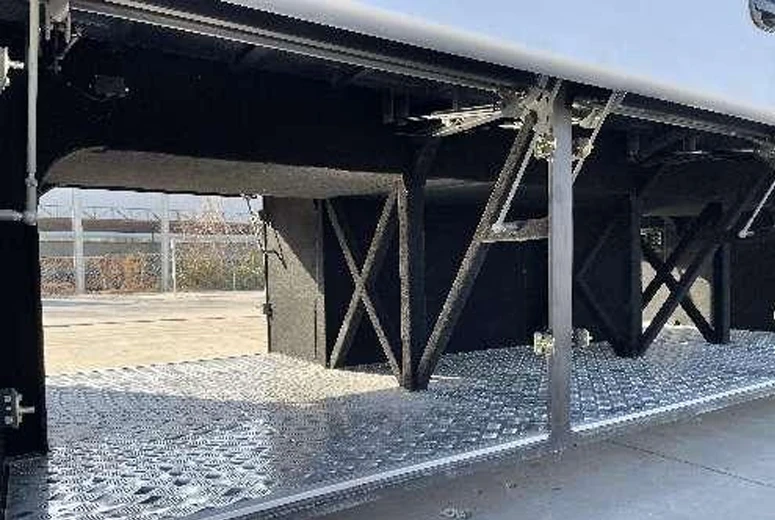automated farming equipment
The Rise of Automated Farming Equipment Transforming Agriculture for the Future
The agricultural industry has long been the backbone of human civilization, providing sustenance and economic stability for countless communities around the globe. In recent years, however, the world of farming has begun to transform dramatically thanks to the advent of automated farming equipment. This technology is revolutionizing the way crops are cultivated and livestock is managed, addressing challenges such as labor shortages, climate change, and the increasing global food demand.
Automated farming equipment encompasses a variety of advanced technologies, including drones, autonomous tractors, and robotic harvesters. These innovations streamline agricultural processes, enhance efficiency, and ultimately improve yield. By reducing the dependency on manual labor, farmers can overcome one of the industry’s most pressing issues the dwindling workforce. According to the U.S. Department of Agriculture, the average age of farmers is increasing, and fewer young people are entering the field. Automated equipment allows farms to maintain productivity without relying solely on the availability of labor.
One of the most notable advancements is the use of autonomous tractors. These driverless machines are equipped with GPS and sensor technology, allowing them to perform tasks such as plowing, planting, and harvesting with minimal human intervention. For instance, John Deere, a leading agricultural machinery manufacturer, has developed tractors that can autonomously navigate fields, ensuring precise operations that can lead to reduced soil compaction and optimized planting patterns. This precision not only saves time and labor but also promotes sustainable farming practices by minimizing waste and maximizing resources.
Drones have also emerged as a game-changing tool in agriculture. Equipped with cameras and sensors, drones can monitor crop health, assess soil conditions, and even apply fertilizers and pesticides in targeted areas. This aerial surveillance enables farmers to make informed decisions regarding crop management, allowing for early identification of issues such as pest infestations or nutrient deficiencies. By utilizing drone technology, farmers can apply treatments only where needed, reducing chemical usage and lowering costs while increasing crop health and yield.
automated farming equipment

Robotic technology is further enhancing the efficiency of harvesting processes. Automated harvesters, for instance, can work continuously and with precision, ensuring that crops are collected at their peak ripeness. This capability is particularly beneficial during busy harvest seasons, where time is of the essence. Companies like Harvest CROO Robotics are developing machines that can autonomously pick strawberries, a task once considered labor-intensive and challenging to automate. This not only accelerates the harvesting process but also addresses labor shortages in the field.
The implementation of automated farming equipment is not without its challenges. The upfront investment required for these technologies can be significant, which may deter smaller farms from adopting them. Additionally, technological literacy among farmers varies, and some may require training to effectively utilize new systems. However, the long-term benefits—such as increased efficiency, higher yields, and reduced environmental impact—can outweigh these initial obstacles.
Moreover, the integration of automated equipment aligns with the growing emphasis on sustainable practices in agriculture. As global food production needs are expected to rise by 70% by 2050, finding ways to enhance efficiency without compromising the environment becomes crucial. Automated technologies can contribute to this goal by optimizing resource use, reducing waste, and decreasing the carbon footprint of farming operations.
In conclusion, automated farming equipment is set to play a pivotal role in the future of agriculture. As the industry faces diverse challenges—including labor shortages, climate change, and the need for increased food production—these technologies offer innovative solutions that can enhance productivity and sustainability. While the transition to automation requires careful consideration and investment, the potential rewards are immense a more efficient agricultural sector capable of meeting the demands of a growing population. As we look to the future, embracing technology may be the key to ensuring food security and environmental stewardship for generations to come.
-
FOTON AUMAN GTL-E 8X4 Dump Truck: Durable Heavy Duty HaulerNewsAug.01,2025
-
2BFY Traction Series Grain Fertilizer Seeder - Chenyang GroupNewsAug.01,2025
-
2BFY Traction Series Grain Fertilizer Seeder - Chenyang Group|Integrated Seeding&FertilizingNewsAug.01,2025
-
2BFY Traction Series Grain Fertilizer Seeder-Chenyang GroupNewsJul.31,2025
-
2BFY Traction Series Grain Fertilizer Seeder-Chenyang Group|Integrated Seeding,FertilizingNewsJul.31,2025
-
2BFY Traction Series Grain Fertilizer Seeder-Chenyang Group|Precision Farming,Agricultural MachineryNewsJul.30,2025
Popular products

























